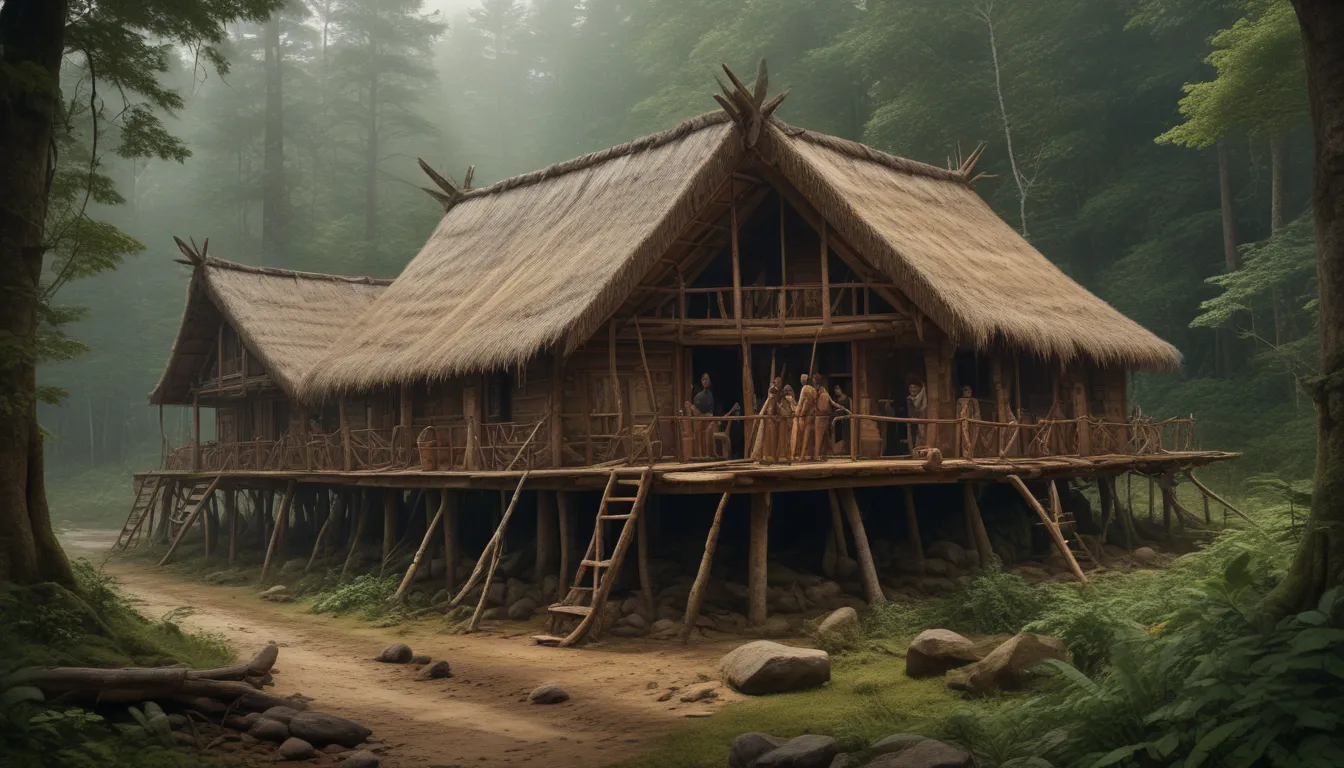The images in our articles may not match the content exactly. They are used to grab your attention, not to show the exact details in the text. The images complement the text but do not replace it.
Have you ever pondered the intriguing homes that housed ancient warriors and wise elders in times long gone? Longhouses, those sprawling wooden structures that once graced landscapes from Europe to North America, hold secrets and stories of communal living that are sure to captivate you. These iconic dwellings were not just mere shelters; they served as centers of culture, governance, and social life. Join us on a journey back in time as we unearth some of the most intriguing facts about longhouses – where every beam and every corner whispers tales of unity, strength, and ingenuity.
Unraveling the Essence of Longhouses
What is a Longhouse?
Longhouses are traditional dwellings utilized by various indigenous peoples worldwide, such as the Iroquois in North America and the Vikings in Scandinavia. Characterized by their elongated shape and communal living spaces, these structures served as more than just homes; they were hubs of social and ceremonial activities. Constructed from locally-available materials, longhouses embody the resourcefulness and cultural practices of their builders.
Origins and Construction
1. The roots of longhouses extend back thousands of years, with evidence indicating their existence during the Neolithic era. These structures were typically crafted from timber, with walls often composed of woven branches coated in mud or clay for insulation.
2. In Scandinavia, Viking longhouses boasted sturdy timber frames and roofs covered in turf or thatch, providing exceptional insulation during harsh winters.
3. Iroquois longhouses in North America could reach lengths of up to 200 feet, accommodating multiple families from the same clan. Constructed from a wooden frame covered with bark sheets, these dwellings were a marvel of indigenous engineering.
Cultural Significance
1. Beyond mere residences, longhouses functioned as the heart of the community, hosting social gatherings, ceremonies, and meetings crucial to the cultural and social fabric of the society.
2. Among the Iroquois, longhouses symbolized clan unity, with each family allocated its own space within the communal structure. The shared hearth promoted a sense of togetherness and collaboration.
Unveiling the Architectural Marvels of Longhouses
Architectural Features
1. A distinctive trait of longhouses is their lack of internal walls, creating a vast, open communal living space. The division of private areas was marked by partitions or furniture arrangements.
2. The elongated design of longhouses proved practical, facilitating efficient heating and ventilation. A central aisle ran the length of the structure, with evenly spaced fire pits providing warmth and illumination.
Adaptations and Modern Legacy
1. Over time, longhouses have evolved to accommodate changing environmental conditions and lifestyles. In some regions, traditional designs have integrated modern materials, blending ancient customs with contemporary needs.
2. Today, longhouses serve as a muse for modern architecture, with their sustainable design principles and community-oriented living spaces garnering recognition in an era focused on greener, more socially inclusive housing solutions.
Sustaining the Legacy of Longhouses
Preservation and Education
1. Initiatives dedicated to preserving longhouses and their associated cultural practices are underway globally. These endeavors often involve reconstructing traditional longhouses using historical methods and materials.
2. Educational programs aimed at enlightening the public about the historical and cultural value of longhouses are gaining popularity, ensuring the transfer of knowledge and traditions to future generations.
Reflecting on Longhouse Life and Lessons
Longhouses, steeped in rich history and cultural significance, stand as tributes to the ingenuity and community spirit of early societies. These structures transcended mere dwelling spaces, acting as pillars of social, political, and spiritual life. As we ponder upon the architectural wonders of longhouses, they serve as timeless beacons guiding us towards a future grounded in communal harmony and environmental stewardship.
Navigating Longhouse Inquiries
FAQs
1. What exactly are longhouses? Longhouses are elongated homes historically used by various indigenous peoples globally, known for their communal living spaces and cultural significance.
2. How long were longhouses typically? Longhouse lengths varied based on culture and purpose, ranging from 50 to over 200 feet, reflecting community size and social dynamics.
3. Were longhouses exclusive to certain regions? Longhouses were not confined to specific areas; they were prevalent in Europe, Asia, and Oceania, each reflecting unique cultural practices and environmental adaptations.
4. What materials were used in longhouse construction? Builders utilized local resources such as wood, bark, and woven mats in North America and bamboo, rattan, and leaves in Borneo.
5. How did longhouses accommodate daily life? Longhouses featured central aisles, family living spaces, fireplaces for warmth and cooking, and raised platforms for sleeping and storage.
6. Are longhouses still in use today? Some indigenous groups continue to dwell in traditional longhouses, preserving cultural heritage and utilizing them for events and ceremonies.
7. What role did longhouses play in their respective cultures? Longhouses were vital to social, spiritual, and political aspects of life, fostering community, cooperation, and identity among inhabitants.
Embracing Trusted Knowledge
Our dedication to offering authentic and engaging content drives our commitment to excellence. Each fact shared on our platform stems from real users like you, weaving a tapestry of diverse insights and information. By upholding rigorous standards of accuracy and credibility, our team of editors ensures that every nugget of knowledge we present is not just captivating but also reliable. Trust in our devotion to quality and authenticity as you embark on a journey of exploration and discovery with us.






